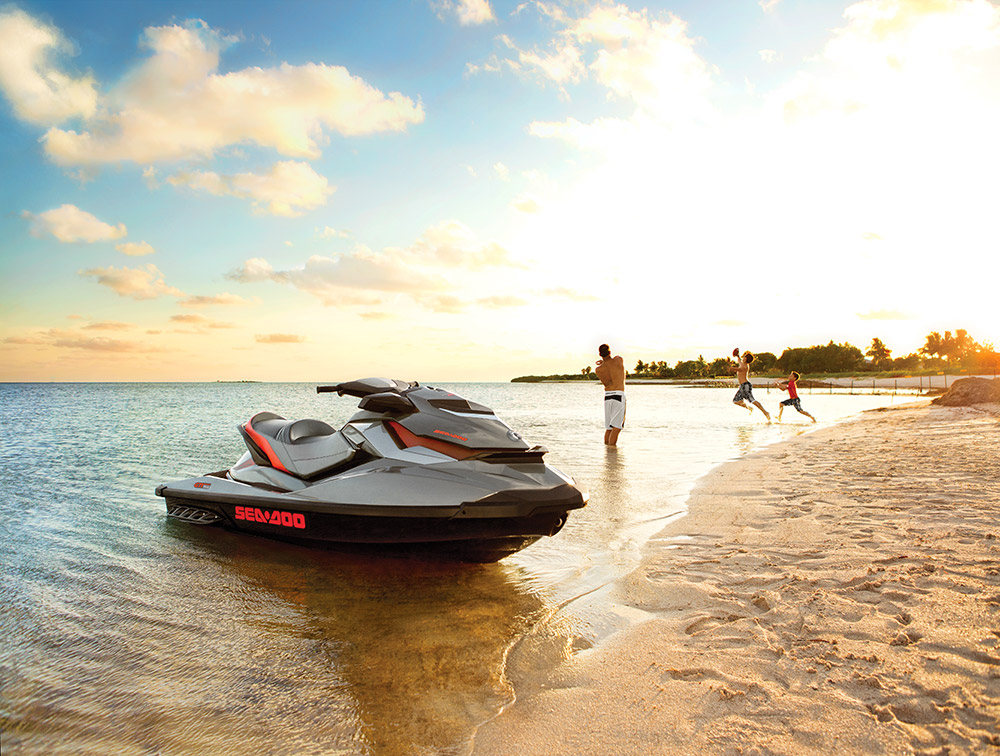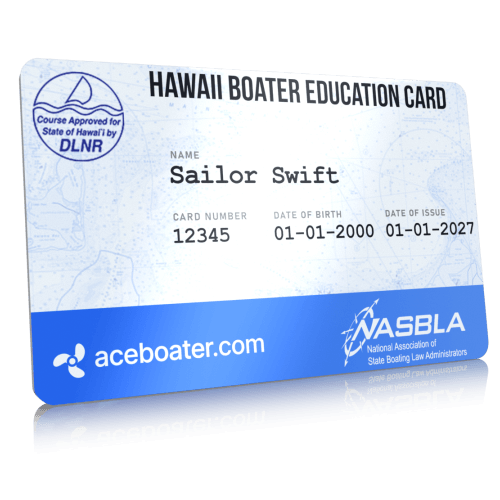Hawaii Thrill Craft and Personal Watercraft (PWC) Requirements


Hawaii Boating License
All recreational thrill craft operators (including PWC operators) must possess and make available upon demand of enforcement personnel a certificate of completion from a State of Hawaii approved boating safety course on the safe use and operation of a thrill craft.
DISCLAIMER: The content of this module is only a portion of what is required for thrill craft certification in the State of Hawaii. It does not certify you to operate a thrill craft. For more information, visit the Hawaii Division of Boating and Ocean Recreation web site.
Regulations
Thrill craft (aka Personal Watercraft or PWCs) must adhere to the same rules and regulations as any other powerboat, including registration with the state and a B-1 class fire extinguisher aboard.
PWC additional requirements:
-
Each person riding on a thrill craft must wear a U.S. Coast Guard approved PFD.
-
It is illegal to exceed the capacity recommendations of a craft.
-
Thrill craft operators may not exceed slow-no-wake speed when within 300 feet of the shoreline.
-
No person shall operate a thrill craft within a marine life conservation district or marine natural area reserve.
-
Thrill craft operation is restricted in certain designated areas as necessary, in order to:
-
avoid possible adverse impacts on humpback whales or other protected marine life;
-
provide for increased public access;
-
reduce user conflicts; and
-
promote overall public safety.
-
Thrill craft operation may be restricted during whale season (December 15 to May 15 of the following year).
In non-designated ocean recreation management areas (ORMA), thrill craft are only permitted to operate in state waters from 500 feet from the shoreline or the outer edge of the fringing reef, and seaward.
In designated ORMA, thrill craft are only permitted to operate within locations designated for recreational thrill craft use.
Although thrill craft are exempt from carrying a USCG approved Emergency Position Indicating Radio Beacon (406 MHz) or a VHF radio, this equipment is highly recommended.
The Hawaii DLNR recommends that an operator of a thrill craft equipped with a lanyard-type ignition safety switch attach the lanyard to the operator’s wrist or life jacket.
In Hawaii, there are no restrictions on when a thrill craft may be operated. However, if operating a thrill craft at night or during times of limited visibility, navigational lights are mandatory as specified in the Code of Federal Regulations (CFR).
No person under the age of 15 may operate a thrill craft. Additionally, it is illegal for anyone to permit, or mislead another person into permitting, a person under fifteen years of age to operate a thrill craft.
Out-of-State Visitors
Out-of-state visitors can attend the thrill craft/tow-in certification classes offered in Hawaii during their visit or rent a thrill craft from a commercial vendor to ride in the commercial thrill craft zones. This rental must be preceded by a five-minute safety demonstration conducted by the vendor and the operator must remain in the designated riding area.
Commercial thrill craft may only be ridden in a commercial thrill craft zone (a 200-foot radius circle) in an ORMA.
A person who is certified to operate a thrill craft in another state may legally operate a thrill craft in Hawaii provided that certification was issued through a National Association of Boating Law Administrators approved course, and the operator completed the portions of a certificate course for Hawaii that includes, but is not limited to:
-
Local ocean safety principles and practices;
-
The historical, cultural, and customary practices of Hawaii's ocean users; and
-
Any rules or laws regarding protected species and thrill craft operation in the state.